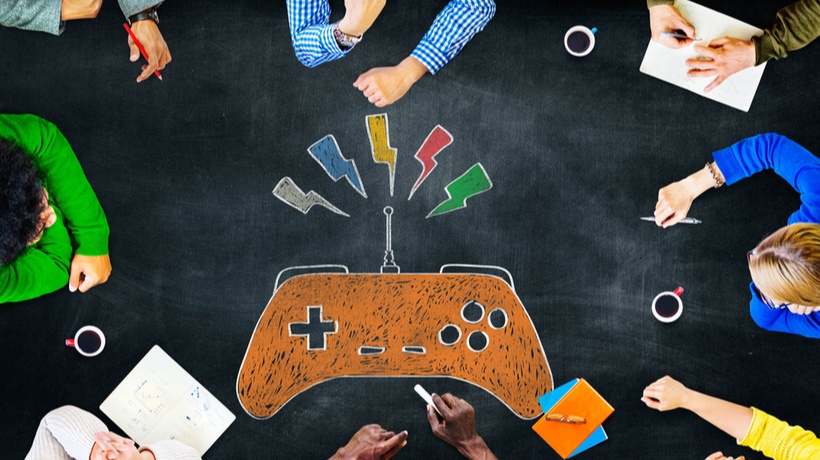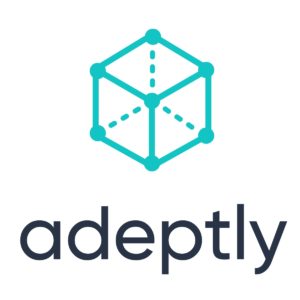Understand The Science Of Serious Learning Games
"Serious learning games." Sounds like an oxymoron, doesn’t it? How can something be serious and be a game? Well, the content, narrative, and winning of a game can be serious, even if the very purpose of a game is to have fun. We look at five crucial characteristics of game-based learning and explore the truth behind the science of serious learning games. Discover how corporations can reap the benefits and enjoy higher employee engagement and performance by adding gameplay to their Learning and Development (L&D) programs.
5 Key Benefits Of Game-Based Learning
- The Immersive Enjoyment Of Gameplay
- The Measurability Of Personalized Learning
- The Normalization Of Failure
- The Instant Feedback
- The Use Of Both The Cognitive And The Affective Brain
The Immersive Enjoyment of Gameplay
Interest is a "powerful motivational process" that, when engaged correctly, has been proven to greatly increase learning [1]. Playing a game, any game, but particularly one that the player enjoys automatically engages that player. Couple a (difficult or dull) learning topic with immersive gameplay and players become utterly absorbed in the game and engrossed with the task at hand.
Game-based learning presents an opportunity where an entire syllabus of information from customer service policies to pilot flight simulators and hospital wings [2] to cybersecurity can be learned through gameplay. These areas with complex layers of knowledge and skill requirement can be easily broken down into manageable chunks of consumable information, all of which are taught and tested within the framework of a game.
Learning Is Personalized And Quantifiable
Measuring individual performance can be a fiddly task. Annual reviews are often dismissed by many employees as ineffective forms of feedback. Nevertheless, it’s often in these brief encounters with managers that employees are given opportunities to express learning needs and review their performance. Learning plans may be personalized, but only to a certain extent; teams with similar roles are often pushed toward achieving collective goals or reaching benchmarks. There is little to no individualization and personalization in learning plans, and learning goals tend to be broad; personalized learning can be more difficult (read: time-consuming) to quantify and justify.
Enter game-based learning, a solution that incorporates a dashboard for the Learning and Development team, and a learning environment with personalized journeys for each employee. Employers can observe, record, and analyze each individual’s performance in a matter of clicks; the data consolidation and abstraction are performed by the Learning Management Software. Better still, as much of this happens as the learner plays, employers can adjust the learner’s game content as needed. For areas with greater risk of difficulty or failure, employers can create additional tasks and tests. Individuals can now receive tailored support without consuming the L&D team’s time and without consuming learning resources needed to support other employees.

The De-Stigmatization Of Failure
Failure has been drummed into us since children as being unacceptable, a reflection of our moral code and identity, and something that leaves us feeling really bad. We are repeatedly penalized in life for making mistakes. Forget to pay for parking? Here’s a fine that’s 20 times its value. It’s no wonder that in the workplace employees shudder at the thought of making mistakes and feeling humiliated amongst their peers and embarrassed to look at their bosses. The irony of it all is that we need vulnerability and courage to help us grow and, through mistakes and failure, employees develop a growth mindset that will ultimately lead to their success [3].
Game-based learning holds the answers. Serious learning games give individuals a space to make choices that are tough, to feel vulnerable or stupid, to make mistakes...and for everything to be alright. So, when a learner continually hits a 60% success rate, all is not lost. On the face of it, the stats seem bad. But dig deeper and there’s more concrete development taking place. These employees are developing their emotional intelligence, experiencing real-world consequences in safe, controlled, simulated environments, and growing a penchant for trying again and getting it right.
Alongside this, analytics change from being a dreaded report of stats and instead become everyone’s best friend. Lower test scores, in the beginning, are more accurate indicators and benchmarks of understanding. Game-based learning analytics can point out exactly where these employees are failing, allowing L&D teams to easily spot areas where individuals perform the worst and can provide additional learning to encourage repeat attempts. Say goodbye to the lucky first-time passes disguised as concrete knowledge; game-based learning technology ensures everyone really knows what they’re talking about.
The Instant Feedback
Employees who receive more feedback, perform better [4]. One study [5] showed that 43% of highly-engaged employees receive weekly feedback. Game-based feedback can be just as effective. Ask anyone about the best bit of taking a test and they’ll say “when it's over” or “when I get my test results back and they’re good enough.” Live results, instant feedback, and easily accessible information about their performance give employees the dopamine hit and the motivation they need to continue improving their performance.
The Use Of Both The Cognitive And Affective Brain
It has long been thought that a smart person requires an effective cognitive brain, one which is able to receive, understand, process, store, transform, recall, and apply information from external sources. The best employees, it was thought, had the sharpest cognitive ability. The affective side of the brain, the side that affects how we experience emotions like depression, happiness, and anxiety, has only recently been proven to be a valuable and necessary part of learning. Put simply, we need to be able to understand and use information (cognitive brain) but to do that effectively, we need to care (affective brain). Serious learning games create stronger interactions with the learning topics through emotional engagement, which ultimately results in better performance and understanding of a task.
In Summary: Game-Based Learning Has Some Amazing Features
Game-based learning allows learners to immerse themselves in learning, without really realizing they are doing so. Simultaneously, employers can record and assess data easily and adjust their learning strategy accordingly. This flexible, blended learning approach gives employees the freedom to learn at their own pace, in a safe environment, with clear goals. Each benefit of game-based learning is as good as the next, making them a necessary element of every L&D team’s strategy.
References:
[1] Interest Matters: The Importance of Promoting Interest in Education
[3] Dr. Dweck’s research into growth mindset changed education forever
[4] 17 Mind-blowing Statistics on Performance Reviews and Employee Engagement


